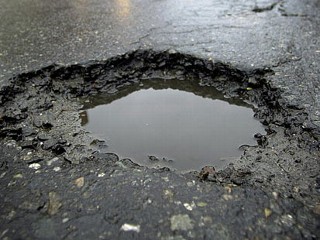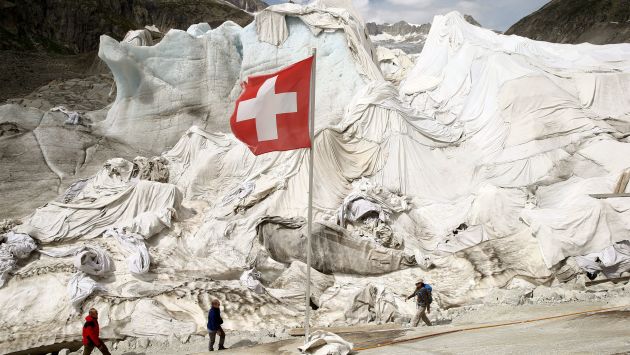
And Why Are We Springing Forward Again?
Only a Minnesotan would find solace and grim satisfaction from freezing. Admit it, 30s felt pretty good this past week, after the coldest winter in 4 years. A higher sun angle helped too.
But why are we setting our clocks ahead late tonight? Florida is considering staying on Daylight Saving Time year-round, joining Hawaii and much of Arizona. Is it safety at the bus stop during winter twilight, more time for farmers out in their fields, maybe saving energy? Uh, nope. A 2008 US Department of Energy study reported that daylight saving time reduces annual energy use by only about 0.03%.
A little snow dribbles out of a slate-gray sky today and tonight; a sloppy inch may freshen up the pile of slush in your yard, but roads should be mainly wet until later tonight. The benefits of a March snow. We dry out on Sunday with sunshine much of next week. Pacific air lures the mercury to 50F by Thursday. ECMWF guidance hints at 60F next Friday with a risk of a thundershower. I’m skeptical, but I predict scattered bouts of spring fever late next week.
That said, keep those heavy jackets handy.
Second Opinion. Last night’s 00z NAM guidance suggests a band of heavier wet snow over central Minnesota, with potentially plowable amounts from near Alexandria and St. Cloud to Taylor’s Falls. Map: NOAA and pivotalweather.com.
Spring Fever Returns Next Week. Temperatures reach average levels this weekend, but 40s and 50s are likely the latter half of next week. I wouldn’t be shocked to see a 60-degree high close to home next Friday. Twin Cities ECMWF numbers: WeatherBell.

Extended Outlook: A Proliferation of Potholes. Potholes are more likely in March and early April than any other time of the year. Blame snow on the ground – sloppy, rainy springs – and the freeze-thaw cycle. Water has an unpleasant tendency to freeze at it expands. Water seeps into cracks in the highways. At night the mercury dips below 32F and water expands into ice. Traffic puts additional weight on the roads, pulverizing the surface over time. Cracks mutate into craters. Salt makes things worse, lowering the freezing temperature below 32F, prolonging this damaging freeze-thaw cycle. The result: good news for tire dealerships!
Why Are Potholes More Likely to Form in Spring? Here’s the best explanation I’ve seen, courtesy of the Summit County Engineer’s Office in Akron, Ohio: “They are caused by the expansion and contraction of ground water after the water has entered into the ground under the pavement. When water freezes, it expands. Think of when ice cubes are made. A tray full of water is put into the freezer, and when you remove the tray from the freezer, you will notice the water has expanded. This same effect happens when water gets into the ground under the pavement. If it has a chance to freeze, it will take up more space under the pavement, and the pavement will expand, bend, and crack, which weakens the material pavement. Then when ice melts, the pavement contracts and leaves gaps or voids in the surface under the pavement, where water can get in and be trapped. If the water freezes and thaws over and over, the pavement will weaken and continue cracking. As the weight of cars and trucks pass over the weak spot in the road, pieces of the roadway material weaken, which will cause the material to be displaced or broken down from the weight, creating the pothole. What happens when salt is brought into the picture? Water will freeze at 32 degrees Fahrenheit. When salt is used, it lowers the temperature that water will freeze. This creates an artificial freeze-thaw cycle that permits more occurrences of the damaging cycle to occur. This happens more often in the spring because of the melting that takes place and because the temperatures fluctuating above and below the freezing point very frequently.”
Nuclear Fusion on Bring of Being Realized, Say MIT Scientists. Here’s an excerpt from The Guardian: “The dream of nuclear fusion is on the brink of being realised, according to a major new US initiative that says it will put fusion power on the grid within 15 years. The project, a collaboration between scientists at MIT and a private company, will take a radically different approach to other efforts to transform fusion from an expensive science experiment into a viable commercial energy source. The team intend to use a new class of high-temperature superconductors they predict will allow them to create the world’s first fusion reactor that produces more energy than needs to be put in to get the fusion reaction going…”
Image credit: “A visualisation of MIT’s planned fusion experiment.” Photograph: Ken Filar/MIT
Civil: A New Platform for Journalism? I stumbled on this site, which is testing new models to ensure journalistic inclusion, accuracy and transparency. In an era of fake news we need all the help we can get. Details via Civil: “The ad-driven revenue model that traditionally funded quality journalism has not translated to the digital economy. Journalism is a fundamental pillar of free, democratic societies, and newsrooms around the world are facing an existential threat like never before. We’re committed to introducing a new funding model that enables journalists to focus on journalism, not satisfying clicks-over-quality mandates from third parties like advertisers and publishers…”
Have You Been Creeped Out by Amazon Alexa’s Laugh Yet? CNN has the story: “It’s quiet in the house. Nobody else is home and the cat is fast asleep. Then you hear a disembodied woman’s voice let out a short, mocking cackle. No, you’re (probably) not being haunted, it’s just Amazon’s Alexa voice assistant malfunctioning in a profoundly creepy way. Some Alexa users have reported hearing an unprompted laugh from their smart speaker devices in the last day. The laugh happens randomly, when nobody is using the device, or in response to request to turn on or off lights...”
Photo credit: CNN Money, which has more perspective here.
America Has a Billion Dollar Drunk Shopping Problem. MarketWatch has the sordid details: “Nearly half of American adults admit to regularly shopping while drunk — and it appears to be getting worse. Americans spent an average of $448 per person in drunk purchases in 2017, nearly double what they did in 2016, a new survey of 2,000 adults from shopping comparison site Finder.com found. That would equate to billions of dollars on drunk shopping per year nationwide, the authors said…”
Does Your Lake Have a Moving Island? Atlas Obscura has all the head-scratching details: “Residents up in Crow Wing County have had enough. “The wild beast of North Long Lake,” as one person described it to a local TV news crew, broke loose from the shoreline last fall. Heedless of property lines and proper decorum, it caromed around the lake for about three weeks before coming to rest, leaving behind crumpled docks and mangled boat lifts. For now it is harmless, frozen in place. As the spring thaw approaches, the residents who live around North Long Lake are gearing up once more to deal with their beast. It won’t be easy…”
Photo credit: “The bog on Minnesota’s North Long Lake last fall.” Steve Kohls/ Forum News Service.
5″ snow on the ground as of Friday evening in the Twin Cities.
35 F. high temperature yesterday at MSP.
38 F. average high on March 9.
31 F. high on March 9, 2017.
March 10, 2012: The record high of 66 degrees at the Twin Cities is the first of 8 record highs in a 10-day span.
March 10, 1948: Bitterly cold conditions, especially for March, occur in Minnesota. A low of -44 is reported at Itasca.
SATURDAY: Light snow and flurries – mainly wet roads. Winds: SE 8-13. High: 36
SATURDAY NIGHT: Coating of slush. Low: 26
SUNDAY: Mostly cloudy, a drier day. Winds: NW 8-13. High: 38
MONDAY: Mix of clouds and sun. Winds: NW 10-15. Wake-up: 24. High: 37
TUESDAY: Bright sun with less wind. Winds: NW 5-10. Wake-up: 23. High: 39
WEDNESDAY: Plenty of sun, turning milder. Winds: SW 5-10. Wake-up: 25. High: 44
THURSDAY: Some sun, feeling a little feverish. Winds: S 8-13. Wake-up: 32. High: 53
FRIDAY: Hello spring! Risk of a T-shower. Winds: SW 8-13. Wake-up: 39. High: 58
Climate Stories…
Get the Politics Out of Climate Change. An Op-Ed at Bloomberg View resonated; here’s a snippet: “…Perhaps the accumulating concrete signs of climate change are helping people recognize the need to act. But stronger leadership is also needed to get state carbon taxes across the finish line. What’s needed most is to get this issue out of partisan politics, where it never belonged. There’s nothing left or right about seeing that lower emissions are essential to insure against the possibility of extreme warming, sea-level rise and severe weather patterns. Carbon taxes, moreover, should appeal to Republicans as much as Democrats, for two reasons. First, they make it possible to reduce emissions with a minimum of government intervention. Put a price on carbon pollution that accounts for the damage it inflicts, and the market can be left to work out the most efficient ways to dial it back. Second, the revenue can be used to reduce other taxes. (The legislation in Washington was not revenue-neutral, which may explain why it failed to draw Republican support.)...”
Track the Spread of Climate Misinformation on the Web. You can check out the claims and refutations at Hoaxy.
CLIMATE IMPACTS: From Climate Nexus: “Global warming is already fueling ‘high-tide’ floods — and it’s only going to get worse (USA Today, Axios, InsideClimate News), as climate change parches Somalia, frequent drought comes with conflict over fertile land.” (PBS NewsHour)
Fleet of Sailboat Drones Could Monitor Climate Change’s Effect on Oceans. Natural patterns of El Nino and La Nina are superimposed over a slow warming of the world’s oceans, as reported by Science Magazine: “Two 7-meter-long sailboats are set to return next month to California, after nearly 8 months tacking across the Pacific Ocean. Puttering along at half-speed, they will be heavy with barnacles and other growth. No captains will be at their helms. That is not because of a mutiny. These sailboats, outfitted with sensors to probe the ocean, are semiautonomous drones, developed by Saildrone, a marine tech startup based in Alameda, California, in close collaboration with the National Oceanic and Atmospheric Administration (NOAA) in Washington, D.C. The voyage is the longest test for the drones and also the first science test in the Pacific—an important step in showing that they could replace an aging and expensive array of buoys that are the main way scientists sniff out signs of climate-disrupting El Niño events...”
Photo credit: “Carrying a suite of 15 instruments, saildrones 1005 and 1006 started their Pacific journey last September from Alameda, California.” Jennifer Keene, UW/JISAO and NOAA PMEL.
The Battery Will Kill Fossil Fuels – It’s Only a Matter of Time. Because every industry and technology gets disrupted – nobody gets a pass in perpituity. Here’s a clip from Bloomberg: “…Batteries, once relegated to powering small devices like remote controls and watches, are now poised to energize the things most central to daily life, from smartphones to cars to entire homes and offices. And Big Oil’s taken notice. At CERAWeek by IHS Markit — an annual conference that has drawn some of the largest names in the world of fossil fuels to Houston this week — executives met to talk batteries, not once, but twice. “The question is no longer if batteries will disrupt the power sector,” IHS wrote in a description of one of the discussions, “but rather how much and how fast?” (If it’s any indication of how the industry itself feels about this, the first of these sessions was held across the street from the actual conference, at a restaurant, and it was still packed.)...”
$1.6 Trillion of Investments at Risk if Fossil Fuel Firms Fail to Heed Climate Targets. Here’s an excerpt at Forbes: “Fossil fuel companies have already seen their future markets come under attack from the success of renewable energy and electric vehicle technologies. Now they face another type of threat – the remorseless logic of international climate goals. Energy groups risk wasting $1.6 trillion of investment by assuming that current emissions-cutting policies will not be tightened up in the light of the latest science and international climate change goals, according to the think tank Carbon Tracker. In a new report, Mind the gap: the $1.6 trillion energy transition risk, it warns that there is “a yawning gap” between the Paris Agreement, which pledges to keep climate change well below 2°C above pre-industrial times and aims for 1.5°C, and government policies, which are consistent with 2.7°C of warming…”
Image credit: “Oil sands projects such as this one in Alberta, Canada, are at risk from tighter climate change regulations, says Carbon Tracker.” AP Eamon Mac Mahon

Swiss Residents Are Wrapping Glaciers in Blankets to Keep Them from Melting. I’m pretty sure this is nothing to worry about. Move along! Nothing to see here. Quartz reports: “Every summer for the last eight years, people who live in the Swiss Alps have been wrapping a beloved glacier in blankets. The white canvas blankets are intended to reflect sunlight off the Rhone Glacier, to try to reduce how much of it disappears each year. And Swiss glaciologist David Volken says it’s probably working; he told Agence France-Presse the blankets may reduce seasonal melting by as much as 70%. The Rhone Glacier is a popular tourist destination that has been shrinking rapidly over the last decade; of the roughly 1,148 feet (350 meters) in ice thickness lost since 1856, 131 ft has disappeared in the last 10 years alone, according to AFP. Thus the blankets…”
Photo credit: “Bundled up for summer.” (Arnd Wiegmann/Reuters)
DOI Official Thinks Scientists Shouldn’t Describe Climate Impacts As “Dramatic”: Headlines and links courtesy of Climate Nexus: “High-level Interior Department officials took issue with a US Geological Survey study whose press release described glaciers as “dramatically reduced” due to climate change, the Washington Post reports. Emails reviewed by the Post, obtained in a Freedom of Information Act request issued by a former DOI scientist who resigned last year over censorship, show Assistant United States Secretary of the Interior for Insular Areas Doug Domenech highlighting the terminology in the USGS press release as an example of scientists “going outside their wheelhouse.” DOI official Scott Cameron responded to Domenech’s email and emphasized the “need to watch for inflammatory adverbs and adjectives in…press releases.” The press release in question detailed how climate change had shrunk the size of 39 glaciers in Montana by as much as 85 percent since 1966.” (Washington Post $)

Apparently We Can Let the Stock Market Fight Climate Change. WIRED.com has the story: “…So how can we move the majority of investors to integrate environmental factors into their thinking?” asks Soh Young In, an engineering doctoral student at the Global Projects Center at Stanford. “That’s the problem. They think that environmental factors are a suboptimal decision.” In a new working paper, In and her fellow researchers hope to convince those skeptical investors otherwise.Finance researchers and analysts have been chewing on this problem for years—how (and whether) to integrate environment, social, and governance factors, or ESG, into investment planning. Stipulate that the right-thinking humans who work in finance know climate change is an existential threat; what they don’t know is how to put that knowledge to work without sacrificing money...”


